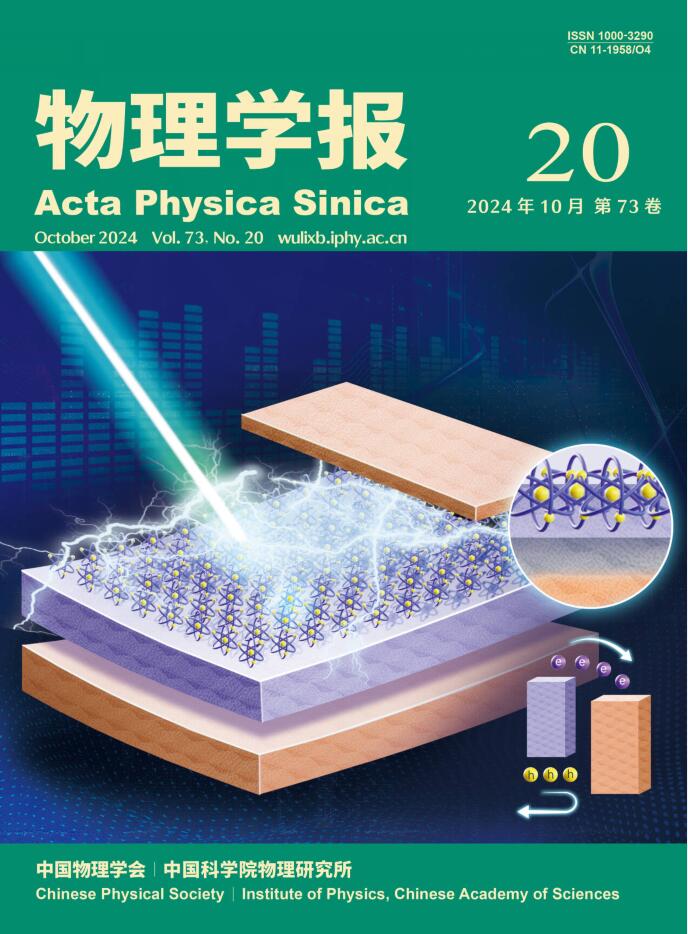基于回归决策树的测量设备无关量子密钥分配参数优化
IF 0.8
4区 物理与天体物理
Q3 PHYSICS, MULTIDISCIPLINARY
引用次数: 0
摘要
量子密钥分发(QKD)的参数配置对通信效果影响很大,在未来QKD网络的实际应用中,需要根据通信状态快速实现非对称信道测量设备无关QKD的参数配置优化,以保证移动用户良好的通信效果,这是实时量子通信的必然要求。针对传统QKD参数优化配置方案不能保证实时性的问题,本文提出将监督式机器学习算法应用于QKD参数优化配置,通过机器学习模型预测TF-QKD和MDI-QKD在不同条件下的最优参数。首先,我们通过实验经验描绘了系统参数和均匀间隔(线性或对数)值的范围。然后,使用传统的局部搜索算法(LSA)得到最优参数,并将其作为本文的最优参数。最后,我们基于上述数据训练各种机器学习模型,并比较它们的性能。对比了神经网络、KNeighbors、随机森林、梯度树增强和分类与回归树(CART)等几种有监督回归学习模型,结果表明CART决策树模型在回归评价指标上表现最好,预测参数的关键率和最优关键率比值的平均值约为0.995,能够满足实际环境下的通信需求。同时,CART决策树模型在非对称QKD协议残差分析中表现出良好的环境鲁棒性。此外,与传统方案相比,基于CART决策树的新方案大大提高了计算的实时性,将不同环境下最优参数的单次预测时间缩短到微秒量级,很好地满足了通信器在移动状态下的实时通信需求。本文主要研究离散变量QKD (DV QKD)的参数优化问题。近年来,连续变量QKD (CV QKD)的发展也非常迅速。在论文的最后,我们简要介绍了将机器学习应用于CV QKD系统参数优化的学术尝试。并讨论了本文方案在CV QKD系统中的适用性。本文章由计算机程序翻译,如有差异,请以英文原文为准。
Parameter optimization of Measurement-Device-Independent Quantum Key Distribution based on regression decision tree
The parameter configuration of Quantum Key Distribution (QKD) has a great impact on the communication effect, and in the practical application of the QKD network in the future, it is necessary to quickly realize the parameter configuration optimization of the asymmetric channel Measurement-Device-Independent QKD according to the communication state, so as to ensure the good communication effect of the mobile users, which is an inevitable requirement for real-time quantum communication. Aiming at the problem that the traditional QKD parameter optimization configuration scheme cannot guarantee real-time, this paper proposes to apply the supervised machine learning algorithm to the QKD parameter optimization configuration, and predict the optimal parameters of TF-QKD and MDI-QKD under different conditions through the machine learning model. First, we delineated the range of system parameters and evenly spaced (linear or logarithmic) values through experimental experience. Then, use the traditional Local Search Algorithm(LSA) to obtain the optimal parameters and take them as the optimal parameters in this paper. Finally, we train various machine learning models based on the above data and compare their performance. We compare the supervised regression learning models such as Neural Network, KNeighbors, Random Forest, Gradient Tree Boosting and Classification And Regression Tree (CART), and the results show that the CART decision tree model has the best performance on the regression evaluation index, and the average value of the key rate (of the prediction parameters) and the optimal key rate ratio is about 0.995, which can meet the communication needs in the actual environment. At the same time, the CART decision tree model shows good environmental robustness in the residual analysis of asymmetric QKD protocol. In addition, compared with the traditional scheme, the new scheme based on CART decision tree has greatly improved the real-time performance of computing, shortening the single prediction time of the optimal parameters of different environments to the order of microseconds, which well meets the real-time communication needs of the communicator in the mobile state. This paper mainly focuses on the parameter optimization of Discrete Variable QKD (DV QKD). In recent years, the development of Continuous Variable QKD (CV QKD) is also rapid. At the end of the paper, we briefly introduce the academic attempts to apply machine learning to the parameter optimization of CV QKD system. And discusses the applicability of the scheme in this paper to the CV QKD system.
求助全文
通过发布文献求助,成功后即可免费获取论文全文。
去求助
来源期刊

物理学报
物理-物理:综合
CiteScore
1.70
自引率
30.00%
发文量
31245
审稿时长
1.9 months
期刊介绍:
Acta Physica Sinica (Acta Phys. Sin.) is supervised by Chinese Academy of Sciences and sponsored by Chinese Physical Society and Institute of Physics, Chinese Academy of Sciences. Published by Chinese Physical Society and launched in 1933, it is a semimonthly journal with about 40 articles per issue.
It publishes original and top quality research papers, rapid communications and reviews in all branches of physics in Chinese. Acta Phys. Sin. enjoys high reputation among Chinese physics journals and plays a key role in bridging China and rest of the world in physics research. Specific areas of interest include: Condensed matter and materials physics; Atomic, molecular, and optical physics; Statistical, nonlinear, and soft matter physics; Plasma physics; Interdisciplinary physics.
 求助内容:
求助内容: 应助结果提醒方式:
应助结果提醒方式:


